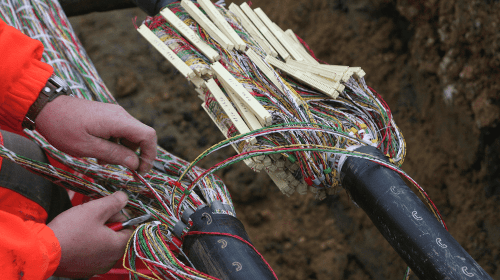Oct 27, 2017
In response to the US Federal Communications Commission (FCC) request for proposals to address how the satellite industry and mobile networks can coexist, Intelsat and Intel have submitted a proposal that has created something of an uproar. Intelsat, which has vast holdings in C-band satellites has been a strong supporter of the protection of C-band for satellite operations. Now, they have proposed a plan, in conjunction with Intel to remove C-band antennas and services from a handful of urban centers, in a cost-plus sharing arrangement with the mobile operators – an industry of great interest to Intel.
The basic plan is to remove C-band antennas and services from several major metropolitan areas of the United States, and free up the frequencies for use by mobile operators. The primary concern from a number of satellite operators who have given the proposal a “thumbs down” at the Asia-Pacific Satellite Communications Council (APSCC) which recently concluded, is the precedent it sets for other operators to make deals that might affect the entire industry. One notable executive in the industry, ABS’ Tom Choi, asked, “If we give them C-band, how long before they come after Ku-, Ka, and the other bands?”
What has driven the proposal, according to Intelsat, is the United States’ FCC and Congress applying pressure on C-band frequencies. Intelsat points out that their clients are coming to them, concerned as to whether C-band will be an ongoing service. Customers are notably anxious about signing long term contracts for capacity that might become unavailable. Intelsat, therefore proposes to remove the uncertainty, by defining specific markets where C-band will be vacated.
C-band systems are installed all over the US, but the frequencies would only be restricted for mobile applications in metropolitan areas like southern California, the DC to Boston corridor, and other high population, metropolitan areas such as Chicago, Houston, Orlando, Miami, etc. In the United States, there is greater concern over content for cable companies, than individual broadband satellite services, although there are certainly a number of those, particularly in warmer regions where C-band is popular for its resistance to rain fade.
Intelsat insists that this is strictly a proposal that applies to the US, but other operators are concerned that this will set a precedent, leaving any of them to make “side deals” which could end up having a serious impact on the industry. Intelsat says they want to go to their US clients and tell them that they are continuing to invest in the next generation of C-band satellites that will continue to support the US – with the exception of these named metropolitan areas. They claim their proposal will remove the uncertainty, and benefit the industry.
Other satellite operators are not so quick to agree. Some mention the upcoming World Radiocommunication Conference (WRC) meeting in 2019. These meetings are held every few years, and are hosted by the International Telecommunications (ITU) Council to review and if necessary revise regulations governing the use of radio-frequency spectrum, as well as the orbits of geostationary and non-geostationary satellite orbits. Currently a discussion of C-band is not on the agenda, however new discussions have been added to the agenda at the last minute, in the past.
In order for this proposal to move forward, C-band satellite operator SES will also have to buy into the plan, as they, along with Intelsat, are the principle operators of C-band in the US. Complicating the issue, perhaps, SES replenished its C-band footprint in the US following the successful launch of the SpaceX Falcon 9 rocket. The Echostar-105/SES-11 satellite with 24 C-band transponders, is replacing the aging AMC-18 satellite. SES indicated that it was still evaluating its position. Telesat and Eutelsat who don’t hold licenses, nevertheless have landing rights that could be affected, and will need to be consulted. We can be confident that we will be hearing more about this contentious issue in the future.





